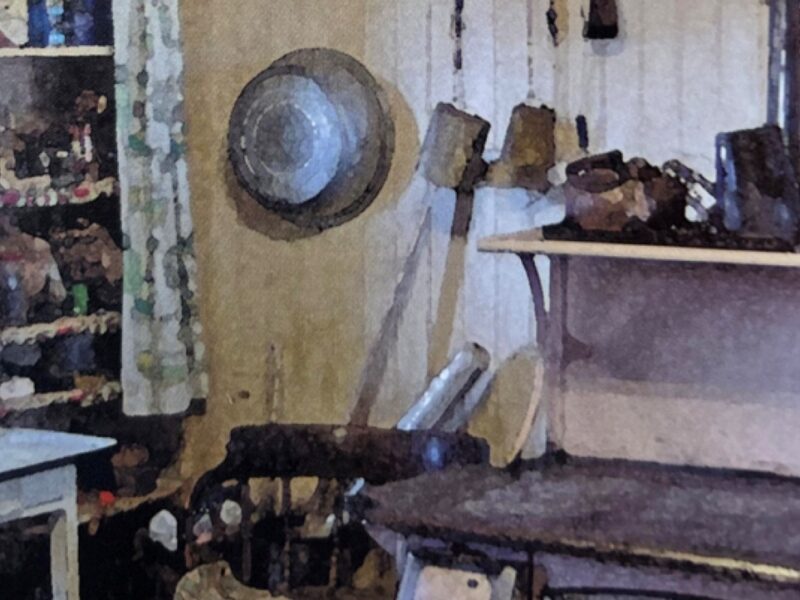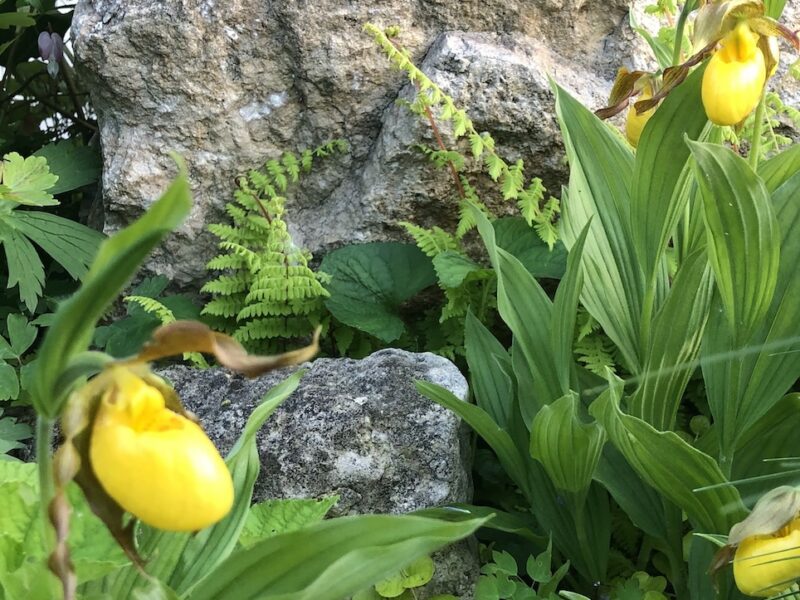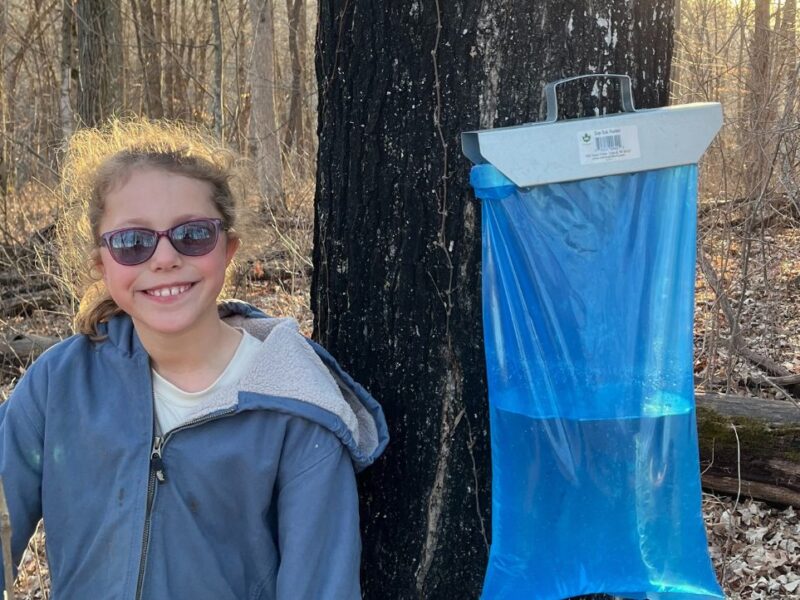Joan Finnegan unloads apples on the loading dock. Five families collected a range of apple varieties, including Cortland, Haralson, and Fireside, making for a complex tasty cider. (Photo by Lori Slindee)
Essay: Cider—An Annual Tradition
FILLMORE COUNTY — One of the great pleasures of rural life is coming together, at times ordained by Mother Nature, to do what needs to be done. Bringing in the fall harvest, making firewood, and canning tomatoes are necessary and good solo work projects. But when the community pitches in together, it becomes a party. The work goes quickly, stories and jokes fly, and friendships are cemented.
Cider season starts as a solo activity. I gather bins and crates, pull out my three-legged tall ladder, and latch my fruit bag around my waist. Up I climb, and commence the meditative process of picking apples one by one, gently placing each in the bag. I repeat this task as I make my way around, climbing higher and higher to collect the best and biggest fruit at the top of each tree. Others are doing the same at their garden orchards, as we time the harvest to be completed just before cider pressing day.
The evening before, my husband borrows a friend’s farm truck, and together we heave twenty bins of apple bounty up onto the truck’s bed. Huge bags of scavenged empty juice, milk and vinegar bottles are secured on top with a net. We rest and wait for morning.
Cider day arrives and friends, along with friends of friends, all make their way with their apples to an Amish family’s cider press business in southern Fillmore County. The father and his polite children scurry around the shed, cleaning and readying everything. Cleverly constructed from old machinery and a bygone milk tank, the system includes an apple grinder powered by a roaring engine, the press itself, and a cider tank.
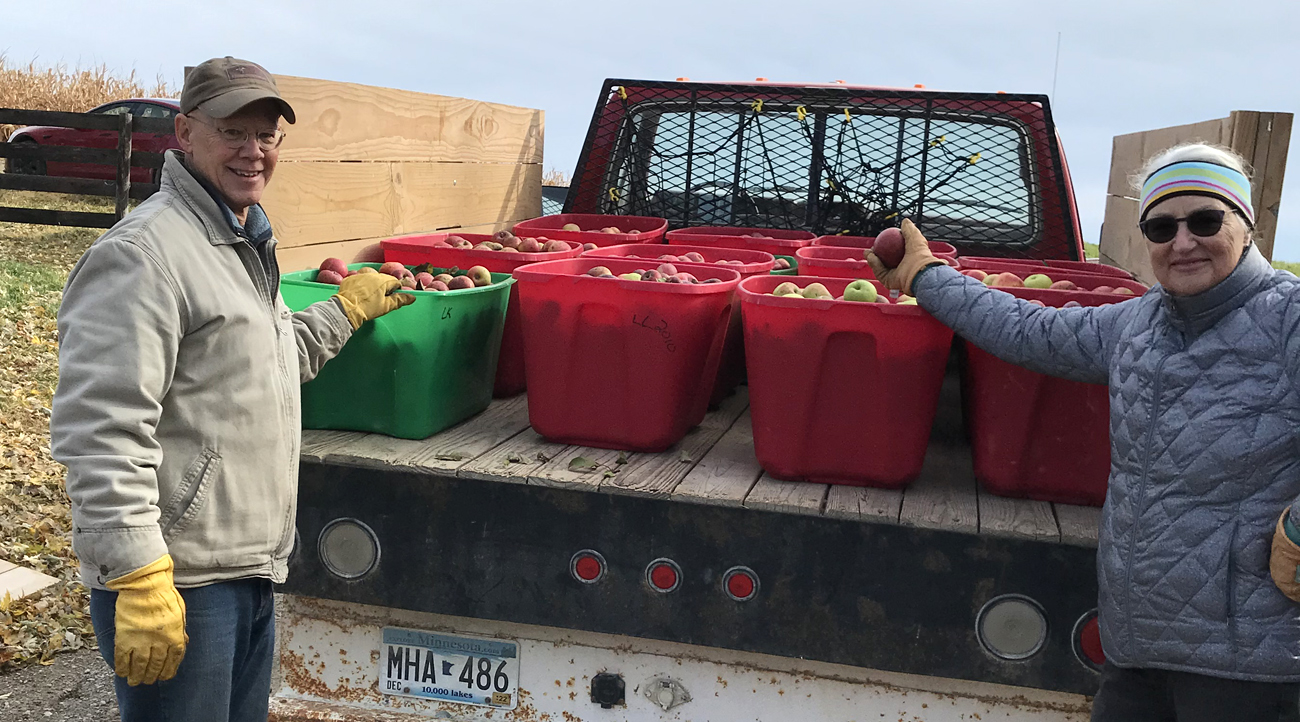
Dick Nethercut and Loni Kemp are ready to unload apples collected from five families, producing nearly 200 gallons of cider. (Photo by Pat Torgrimson)
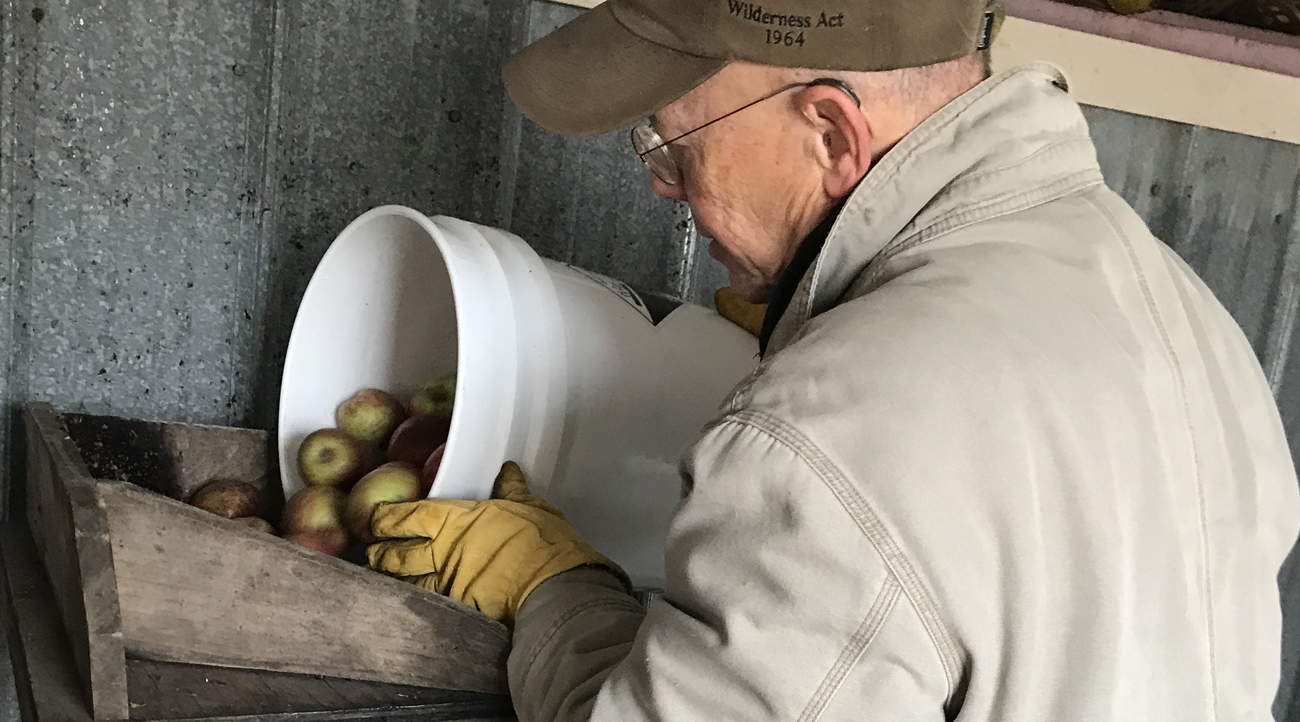
Dick Nethercut dumps apples into a shredding machine creating an apple slurry. (Photo by Pat Torgrimson)
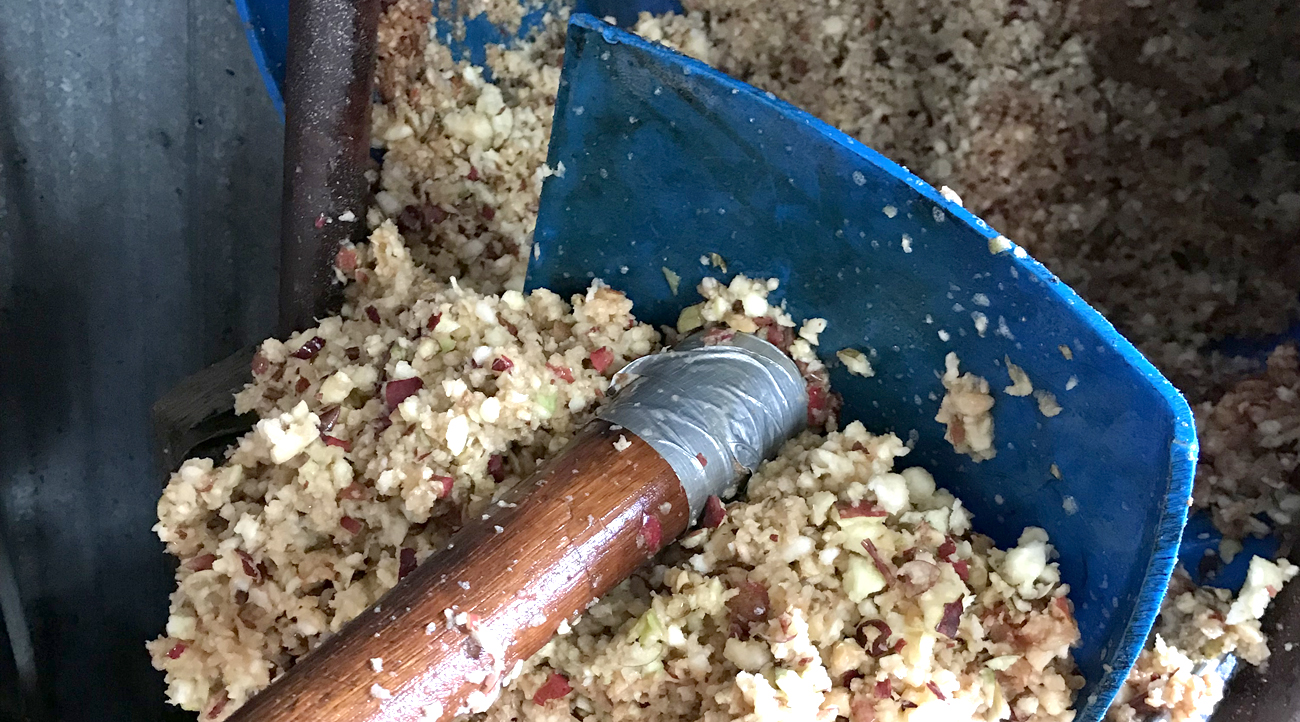
The slurry is scooped out and put into a burlap mold before being pressed into cider. (Photo by Pat Torgrimson)
Everyone has a role to play. Some do a final sort to get rid of any rotten apples; others continuously drop apples into the grinder at the perfect speed. One person rakes out the resulting mash into wooden frames and perfectly folds the flaps of burlap, while another hand pumps the hydraulic press. Cider flows out in a continuous stream. Someone with a strong back lifts the five-gallon buckets of cider to pour into the large holding tank.
I reach in with my tasting cup to catch a sample, and pass the nectar all around. At first it tastes sprightly, then with different apples it becomes darker and sweeter. Apples of many kinds – Cortland, Haralson, and Fireside – mingle in the tank for a cider more complex and tasty than any single variety.
More people arrive, including children who either cower in fear at the noise and chaos, or want to jump right in and do each job. Cupcakes appear for all.
Finally, the last apple is dropped in the grinder, and the roaring engine chugs to a stop. Silence is golden, as we turn our thoughts to the next step. Everybody brings out containers, jugs, and buckets, and we take turns filling them with the precious cider. It is a very good year, and we have nearly two hundred gallons to divide among us. Since fresh cider only lasts a few days, most of it will be frozen. A few of us will ferment a gallon or two to make our own bottled hard cider.
After loading up, we head our separate ways. Hearts are warmed by the human satisfaction of working hard in collaboration with people we love, while bringing pure apple cider home to enjoy with others, long into winter.
©Loni Kemp 2022
…………………
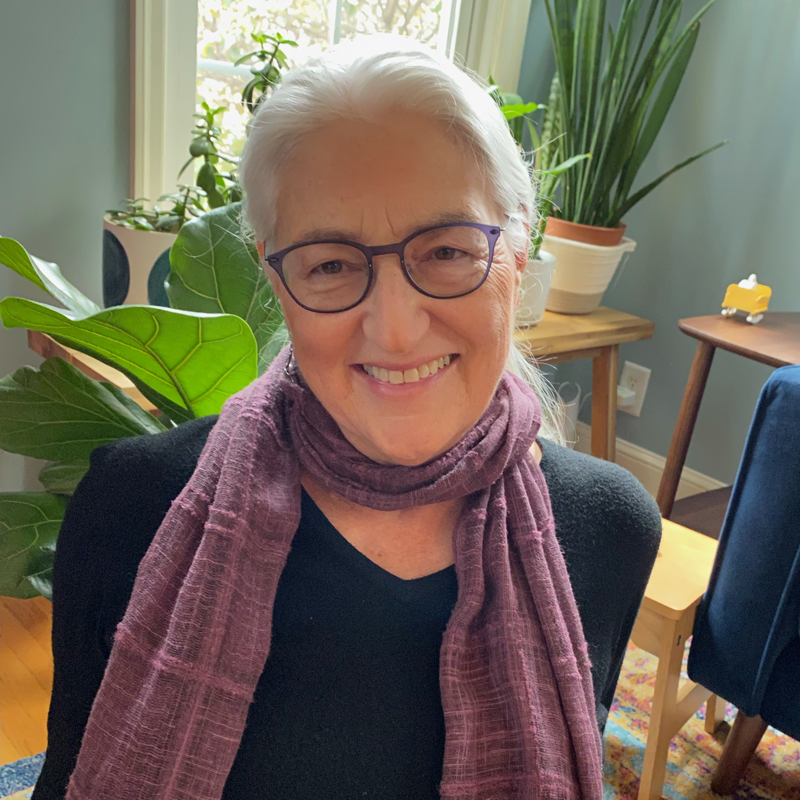
Contributor
Loni Kemp worked for forty years bringing organizations together to create sustainable agriculture, renewable energy and a healthy environment. She gardens and forages at her home near Canton.




